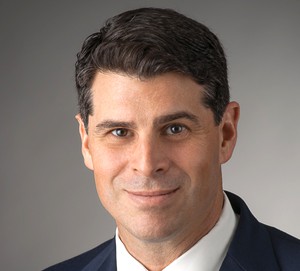Alexa: Who Will Be in My Building in 10 Years?
Why it's so difficult to predict the landscape of single-tenant, triple-net lease buildings in the decades to come, according to Generation Income Properties CEO David Sobelman.
By David Sobelman
 When it comes to investing in triple-net lease properties, everyone wants the same thing: a good deal. When buying an asset, we want the highest cap rate, in the best location, with a rock-solid tenant; when selling—the lowest cap rate, no buyer due diligence and a quick closing. However, with today’s market dynamics dictating increasing cap rates and more scrutiny on the overall use of the property, it seems that a discussion has begun on not just a good deal but whether or not a tenant can survive altogether, let alone in a specific location.
When it comes to investing in triple-net lease properties, everyone wants the same thing: a good deal. When buying an asset, we want the highest cap rate, in the best location, with a rock-solid tenant; when selling—the lowest cap rate, no buyer due diligence and a quick closing. However, with today’s market dynamics dictating increasing cap rates and more scrutiny on the overall use of the property, it seems that a discussion has begun on not just a good deal but whether or not a tenant can survive altogether, let alone in a specific location.
There is no doubt that Americans are living differently than they did 10 years ago and we will live differently 10 years from now. Companies are embracing the challenges that face them as they try to keep pace with our ever-changing habits. For instance, Sam’s Club, a prominent single- tenant net lease tenant, recently decided to close a number of locations, but they are still building new sites that provide better and more efficient access for their customers (i.e., drive through lanes for picking up online orders). Costco’s stock increased dramatically after their last earnings call on news that they have embraced an online presence with their loyal customer base and sales have dramatically increased in due course.
Distribution centers have emerged as the “building-flavor-of-the-month” since close-in suburbs to major markets are now seeing an increase in occupancy of their once vacant industrial buildings that can service this new level of service. Even drug stores—the meeting place for neighbors to talk to each other in the 1950s and 1960s that became more of a convenience store in the 1990s to 2010s—have started planning for scaled down versions of themselves with various distribution models.
Now most real estate practitioners are finding themselves becoming futurists and speculating on what the landscape of single-tenant, triple-net lease buildings will look like in years to come. In essence, they want to try and confirm to themselves and others that they specifically know how to invest in assets that can still be relevant as business strategies change for companies that occupy these spaces. What we aren’t admitting is that we ultimately don’t know the answers to these questions and, like drug stores, big box stores, distribution centers and restaurants, our consumption will be different and will constantly change. There is a reason why companies sign a lease with finite expiration dates and don’t agree to indefinite time periods; its because they want the option to leave a location or change their overall corporate strategies. Companies will change and the real estate they occupy will change along with them.
However, we’re always going to need buildings to house our respective companies. While delivery services are becoming more efficient and refined, there is currently no substitute for an ice cold Slurpee from 7-Eleven, a hot coffee from Starbucks, a non-soggy hamburger from McDonald’s and workplaces to office employees as well as distribution centers for these respective companies.
So, when I ask Alexa, the omniscient presence in my kitchen, “who will be in my building in 10 years”, she clearly and emphatically answers with, “Sorry, I don’t know that!” Its hard to argue with her.
David Sobelman is the CEO of Generation Income Properties, a public net lease REIT; founder of 3 Properties, a net lease brokerage; and founder of Verum Properties, an algorithmic approach to net lease valuation.







You must be logged in to post a comment.